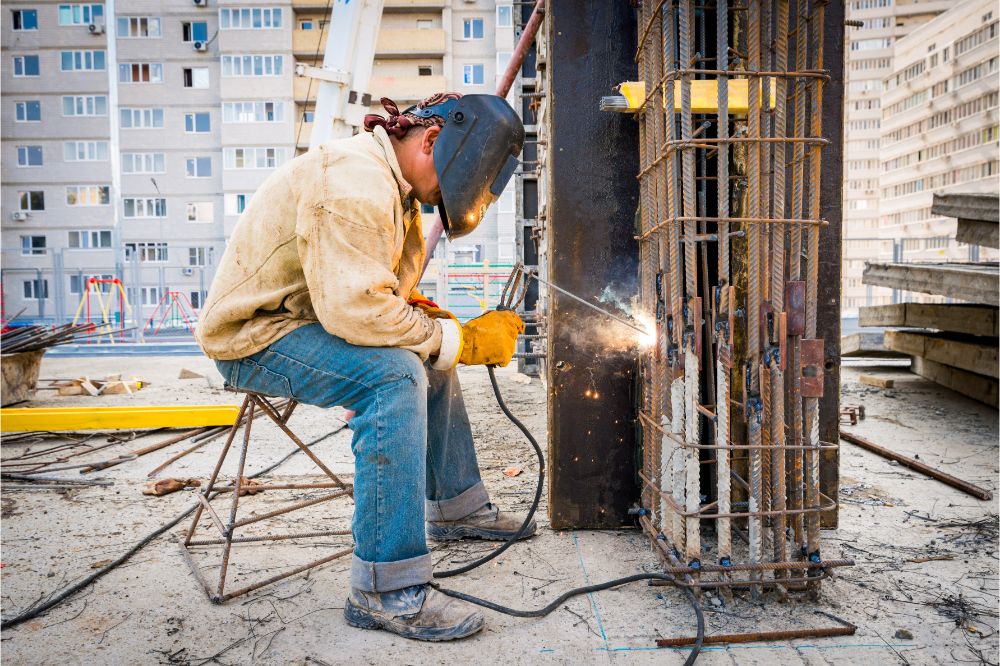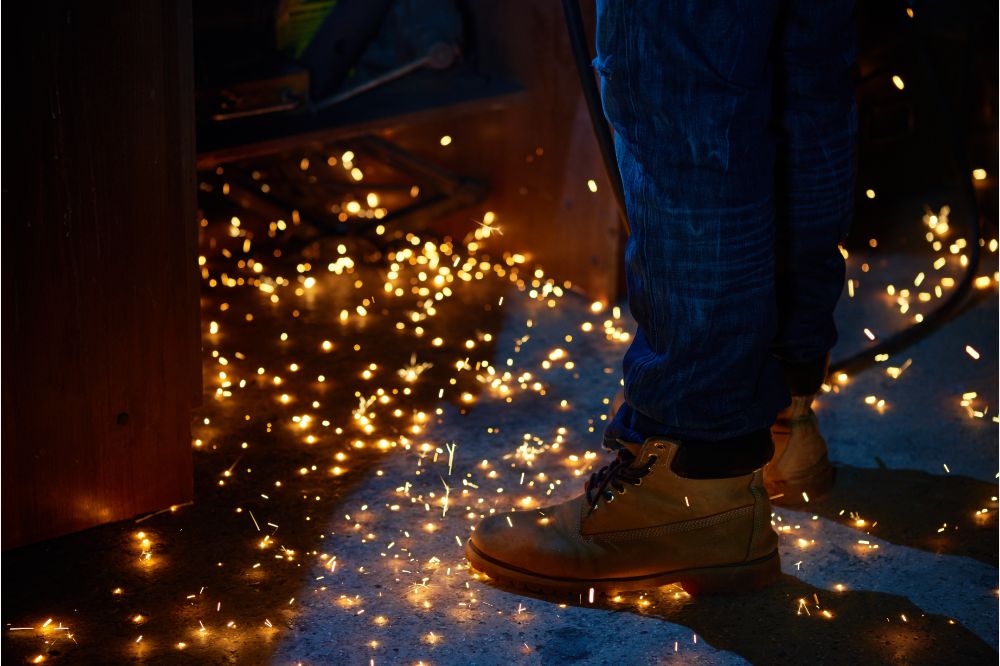Work boots are usually made to have more rugged durability, but most will not last long when constantly used by a welder. Red-hot sparks are unavoidable when welding and to avoid hurting your feet on the job, investing in good boots is the way to go.
As a welder, you should have several pieces of safety gear on while on the job. Your welding shoes are one of the most important. They protect your feet from heat, water, oil, and electrical shocks. Good welding boots should be able to protect and support you while being comfortable. We will explain this further and discuss other things you should look for in a pair of welding boots.
Styles of Welding Boots
Although there are several designs of welder safety boots, there are two types/styles available: laced and slip-on welding boots. Choosing which style to go with is usually based on personal preference.
Laced Welding Boots
Lace-up boots are an excellent choice because they are easy to slip on when the laces are loose and how snug they can be when the laces are tightened. However, there is the probability of tripping over untied laces. This problem is easily solved by tucking the ends of the laces away after tying them
Laces can be damaged much faster while on the job, as they can be hit by red-hot sparks and catch fire. However, welder boots with Kevlar laces are not faced with this problem, as they are fire-resistant. We recommend getting a pair of metatarsal guards if you’re using ordinary laces. Although they are uncomfortable to work with, they will protect your laces from getting burnt. Here are some pros and cons of using laced welding boots.
Pros
- Provides a more secure fit
- Can be customized to your comfort level
- Offers better stability
- Available in various designs
Cons
- Takes more time to wear and remove
- Untied laces can cause accidents
- Needs a lace guard or lace replacement
Slip-on Welding Boots
These are the more common welding boots and offer as much protection and durability as laced boots. They do not need replacement laces to be bought for them and come in handy when you need something you can easily slip on. They do not offer as much support as laced welding boots, although high-quality slip-on boots are very secure on your feet.
Pull-on boots are more comfortable to wear, especially for an extended period. They are not tight and usually cover a larger portion of the feet, including ankles and calves.
Pros
- Fast and easy to put on and remove
- Safer to use as they do not have laces
- Available in various designs
- Offers designs that protect more portions of the leg
Cons
- Loses shape after an extended period
- Less comfortable than laced boots
- Lacks ankle support

What to Look for in Welding Boots
Not all work boots are suitable for welding. Before purchasing any pair of boots for welding, there are certain things you need to consider and understand. Here are some things you should look out for in your welding boots.
1. Resilience
While welding, a lot of spatter is produced, some of which will unavoidably land on your shoes. Choosing boots that are heat resistant will ensure that your feet are well protected while you work.
The soles of your boots and the material type determine how long they last and how long they can withstand wet and hot conditions. Over time, extreme heat and sharp metal will damage your boots. Choose boots with high burn and heat resistance as these will be durable in harsh environments.
2. The Material and Making of the Boots
Your welding work boots should be made of sturdy, heat-resistant materials, such as leather. Tough leather is heat and burn resistant and will provide the needed foot protection against heat and burns. The boots’ stitching should be made of Kevlar, which is highly resistant to heat and burns.
The boots’ making must include Goodyear welt construction, which is the double stitching of leather along the outsole of the boots, serving to attach the upper portion of the boots to the sole. This type of construction adds a certain ruggedness to the boots and increases longevity.
3. Comfort and Support
The comfort factor is a key one to consider when purchasing a new pair of welding work boots. You’ll stand for the better part of the day, so you want to wear comfortable boots. Your boots should be light and the material inside should be soft. Watch out for cheap boots that are light but won’t protect your feet.
Your welding boots must be breathable, allowing the inflow and outflow of air. Breathable boots will reduce heat and prevent you from sweating and keep your feet dry. Your boots should have rubber soles for extra comfort. The soles should be comfortable and soft, so your feet don’t ache after wearing them for hours.
Boots for welders should also have a steel shank in the soles to keep the boots from bending too much and for increased durability.
4. Shock Resistance
As a welder, you’ll work with a lot of electrical equipment. Your boots should be made of non-conductive materials to avoid electrical hazards. You want to choose a pair of boots with rubber outsoles. Boots made with non-conductive materials will be shock resistant and provide proper protection from any shocks caused by electric wires and welding gear.
5. Steel Toe Top
Steel toe boots are a must, especially if you’re working with metal. You use metal workpieces and heavy tools on the job, and any of them can fall on your feet without warning. With the added layers of protection a pair of steel toe welding boots provide, your feet, especially your toes, will be protected from being damaged by such heavy objects. Although steel toes provide impact protection, they aren’t abrasion resistant.
6. Water Resistant
If you’re working at a site where there’s always water on the ground or working during rainy weather conditions, look out for waterproof boots. Boots with waterproof leather protect you from electrical shocks as water is a great conductor of electricity. Your boots should be electrically safe and offer good slip resistance.
What Boots are Good for Welding?
Pull-on welding boots are the stress-free way to go unless laced welding boots are made compulsory by the company you work for. Although laced boots provide better ankle support, the laces can get burnt rather frequently.
Hearing a snap while tying up your laces can be pretty frustrating, especially when you’re in a hurry and do not have spare boot laces. If you are more comfortable wearing boots with laces, you can go for boots with Kevlar laces which are fire resistant. And you could always use shielding devices to protect your laces.
Tips to Further Protect Your Feet
- Remove any piece of metal in your way and always ensure your workspace and the walkway is always clear.
- Position yourself so that sparks and molten metal are not raining on you.
- Try to ensure your work area is water free.
Welders are always exposed to heat, sparks, and spatter. A good pair of welding boots made of high-quality materials is an important piece in a welder’s Personal Protective Equipment (PPE), just as the welding helmet is. Ensure your boots are comfortable, water resistant, heat resistant, and able to protect your feet at all times. What use is a pair of welding work boots if they can’t keep one’s feet safe from the unique risks of the job?

